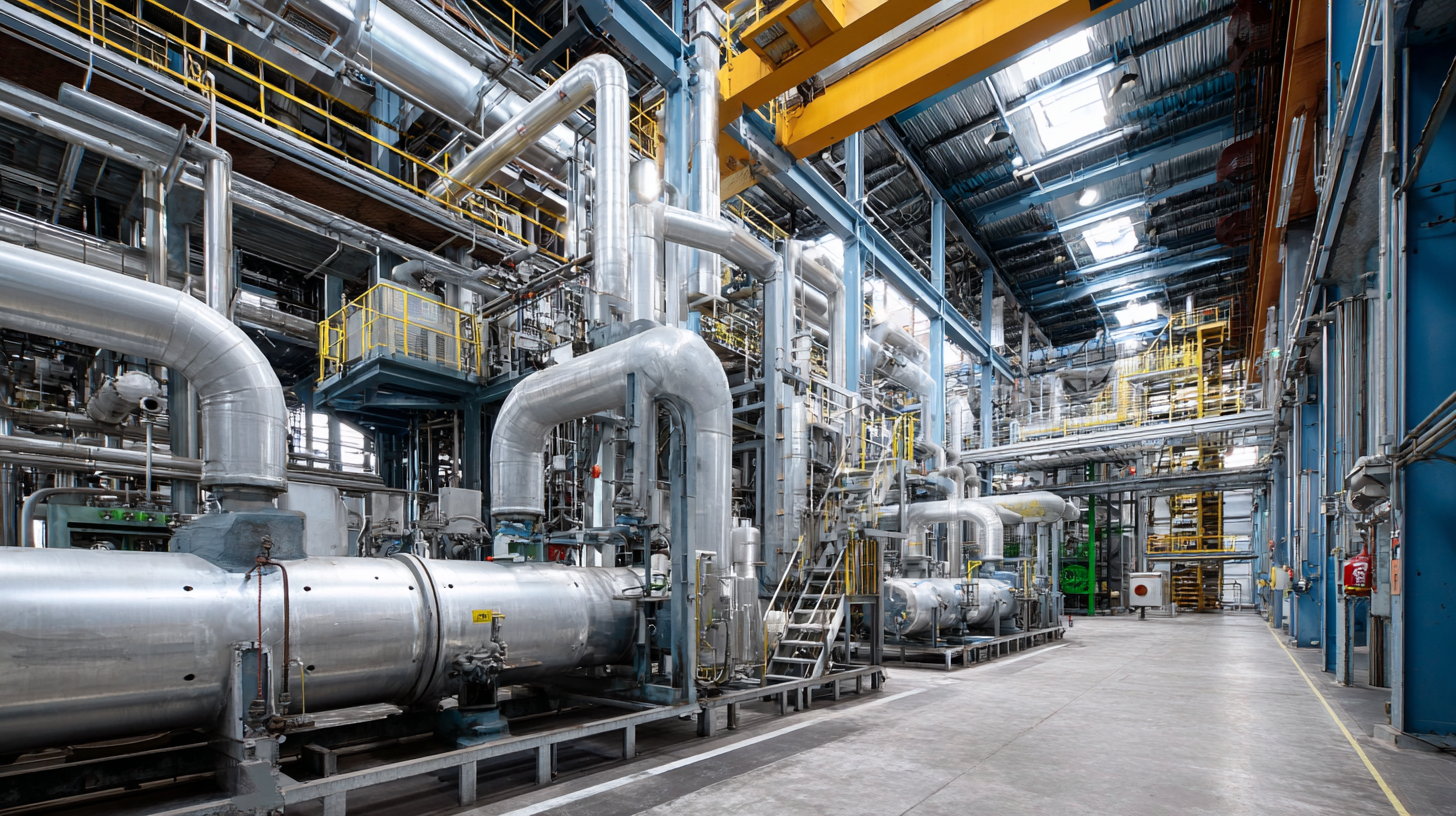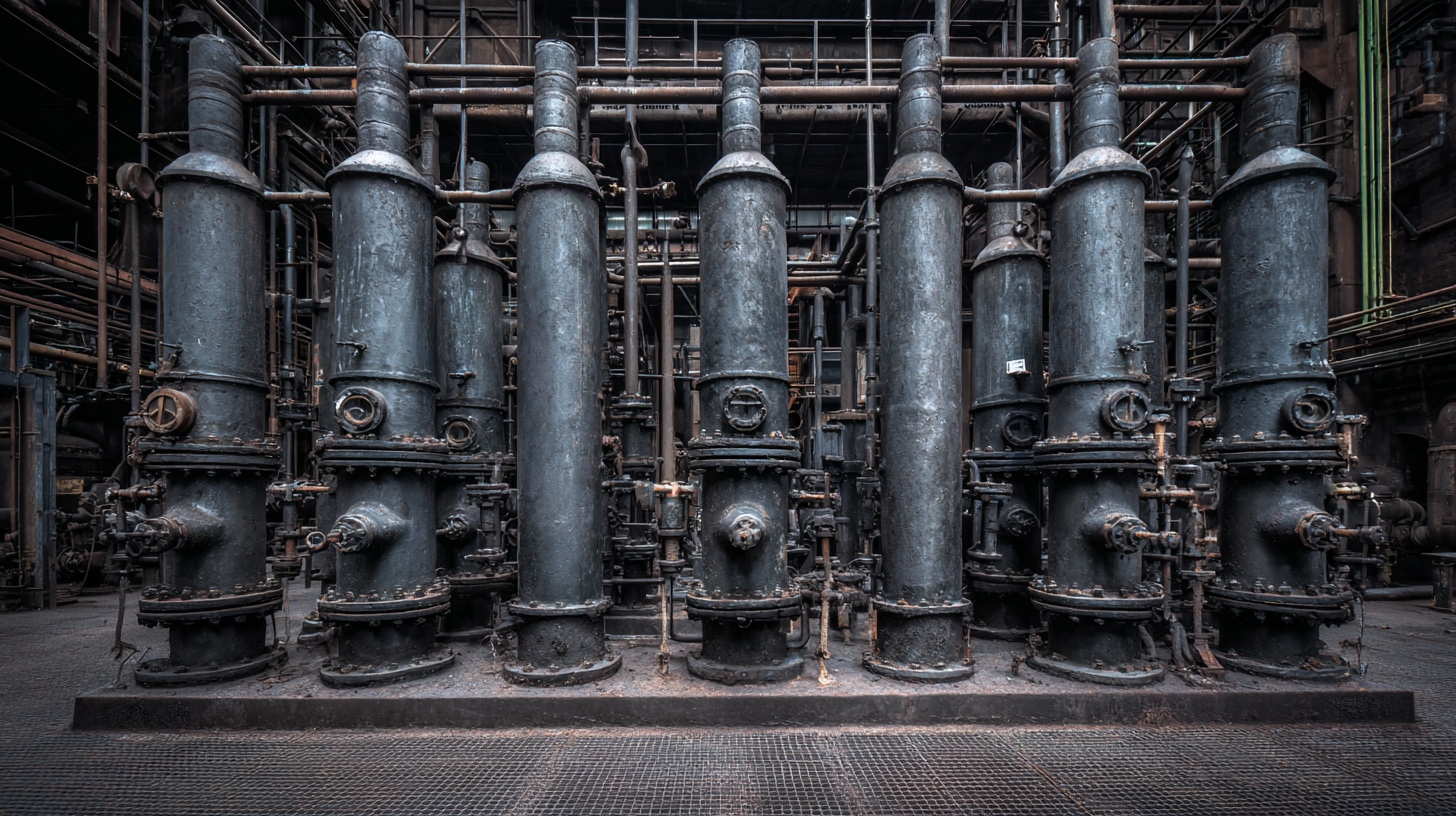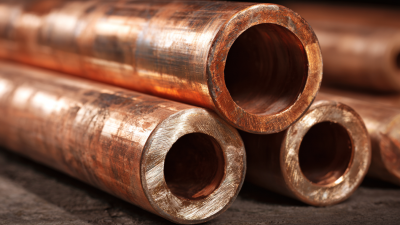How to Choose the Right Boiler Tube for Your Industrial Needs
Selecting the appropriate Boiler Tube for industrial applications is critical for optimizing efficiency and ensuring safety in heat exchange systems. According to a report by the International Energy Agency (IEA), boiler efficiency can significantly impact energy consumption and operational costs, making the choice of materials and types essential for facilities aiming to minimize their carbon footprint. Additionally, research from the American Society of Mechanical Engineers (ASME) indicates that the right Boiler Tube configuration can enhance thermal performance by up to 20%, contributing to substantial savings over time.
As industries strive for sustainability and cost-effectiveness, understanding the characteristics and specifications of different Boiler Tubes becomes paramount. This guide will help you navigate the complexities of selection to meet your specific industrial demands effectively.
Understanding the Different Types of Boiler Tubes Available in the Market
When selecting the right boiler tube for industrial needs, it is crucial to understand the variety of options available in the market. Boiler tubes are primarily categorized into two types: water-tube and fire-tube. Water-tube boilers utilize water-filled tubes heated by combustion gases, making them suitable for high-pressure applications. In contrast, fire-tube boilers direct hot gases through tubes submerged in water, which is more common in lower-pressure settings. Each type serves distinct operational requirements, influencing efficiency, maintenance, and cost.
In addition to the tube type, other factors such as pressure specifications and fuel types must be considered. Low-pressure applications may favor fire-tube designs due to their simplicity, whereas high-pressure needs might necessitate the robustness of water-tube systems. Furthermore, advancements in technology have led to the introduction of hybrid and electric boilers, catering to both environmental and economic considerations. Understanding these aspects allows businesses to make informed decisions that align with their operational goals and budget constraints, thereby contributing to growth in the evolving industrial boiler market.
How to Choose the Right Boiler Tube for Your Industrial Needs - Understanding the Different Types of Boiler Tubes Available in the Market
| Tube Type |
Material |
Applications |
Temperature Resistance |
Pressure Rating |
| Carbon Steel Tubes |
Carbon Steel |
Power Plants, Petrochemical Industries |
Up to 500°C |
Up to 150 bar |
| Stainless Steel Tubes |
Stainless Steel |
Food Processing, Pharmaceuticals |
Up to 800°C |
Up to 200 bar |
| Alloy Steel Tubes |
Chromium-Molybdenum Steel |
High-Temperature Applications |
Up to 650°C |
Up to 300 bar |
| Copper Tubes |
Copper |
HVAC Systems, Heat Exchangers |
Up to 250°C |
Up to 10 bar |
| Titanium Tubes |
Titanium Alloys |
Marine, Chemical Processing |
Up to 600°C |
Up to 150 bar |
Factors to Consider When Selecting Boiler Tubes for Your Industry
When selecting boiler tubes for industrial applications, several key factors must be taken into account to ensure optimal performance and safety. First and foremost, the material of the boiler tubes is critical, as it directly influences their durability and resistance to high temperatures and pressures. Common materials include carbon steel, alloy steel, and stainless steel, each offering distinct advantages depending on the specific operating conditions of the boiler. The ASME B31.3 Standard plays a significant role here by providing guidelines that ensure the safe and efficient operation of piping systems, which is paramount in industrial environments.
Additionally, the projected growth of the Industrial Boilers Market—anticipated to reach USD 20.75 billion by 2030—underscores the importance of making informed choices in boiler tube selection. Technological advancements and economic considerations must also be weighed; selecting the right modelling tools is essential for decarbonizing industrial process heat systems. The integration of such tools enables industries to evaluate their energy consumption and emissions effectively, paving the way for more sustainable operations. By carefully considering these factors, businesses can enhance operational efficiency, ensure compliance with safety standards, and ultimately drive growth in a competitive market.
Boiler Tube Selection Factors for Industrial Applications
Evaluating Material Options for Maximum Boiler Tube Performance
When evaluating material options for boiler tubes, it's critical to consider the operating conditions and the intended performance. Advanced materials technology is essential for constructing boilers that can withstand the high pressures and temperatures typical of ultrasupercritical coal-fired plants. A national R&D program has focused on developing such materials, enhancing both durability and efficiency. According to recent findings, implementing heat rate optimization programs at various power plant sites has resulted in significant performance improvements, demonstrating the importance of the right material selection in maximizing boiler efficiency.
Additionally, the conversion of boiler systems, such as transitioning from burning bituminous coals to Powder River Basin (PRB) coals, presents unique challenges that require precise material evaluations. Recent studies indicate that successful boiler conversions hinge on the advanced design techniques correlated with the specific properties of the chosen materials. In particular, research on welded, expanded tube-to-tubesheet joints has highlighted the impact of expansion percentages and groove inclusions on joint performance, underscoring the need for thorough evaluations during the selection process. By focusing on material properties, operators can enhance boiler performance, reduce emissions, and optimize operational costs in today's rapidly changing energy landscape.
Assessing Durability and Resistance Characteristics of Boiler Tubes
Choosing the right boiler tube for industrial applications involves a thorough assessment of durability and resistance characteristics. According to the American Boiler Manufacturers Association (ABMA), the lifespan of boiler tubes can significantly vary depending on their material composition and operating conditions. For instance, carbon steel tubes, while being the most cost-effective option, typically offer a lower resistance to corrosion and high temperatures compared to alloy steel or stainless steel alternatives. Industry reports indicate that alloy steel boiler tubes can outperform carbon steel, providing enhanced durability in environments that experience extreme thermal and mechanical stress, often leading to a lifespan increase of 25% or more.

Additionally, understanding the specific resistance characteristics of boiler tubes is crucial. Research published by the International Journal of Pressure Vessels and Piping demonstrates how certain alloys can resist oxidation and scaling at elevated temperatures, thereby maintaining efficiency and safety in boiler systems. For instance, tubes made from Inconel and other high-performance alloys exhibit exceptional resistance to high temperature oxidation and corrosion, making them ideal for applications where flue gas temperatures exceed 1000°F. Selecting the right material that not only meets operational demands but also aligns with environmental conditions can lead to significant savings in maintenance and operation costs for industrial facilities.
Importance of Compliance and Standards in Boiler Tube Selection
When selecting the right boiler tube for industrial applications, compliance with industry standards is crucial. Boiler tubes operate under high pressures and temperatures, making their material composition and structural integrity paramount. Adhering to established standards such as ASTM and ASME ensures that the tubes not only withstand operational demands but also promote safety and efficiency. Manufacturers that comply with these standards are more likely to provide reliable products, reducing the risks of failures that could lead to costly downtimes or hazardous situations.

Furthermore, understanding the importance of certification in boiler tube selection can greatly influence long-term operational success. Certification verifies that the tubes have undergone rigorous testing and inspection, meeting specific performance criteria. This validation is essential for industries where safety regulations are stringent, such as power generation and petrochemicals. By choosing certified boiler tubes, companies can enhance their operational reliability while also ensuring compliance with regulatory requirements, ultimately leading to a more sustainable and productive industrial environment.

Home
About Us
Products
Carbon & Carbon Alloy Steel
Stainless Steel
Copper & Nickel Alloy
Heat Efficiency Tubes
Pipe Fittings
Pipe Flanges
Gasket, Stud Bolt &Nut
Industrial Valves
Tech & Service
Blog
Contact Us







